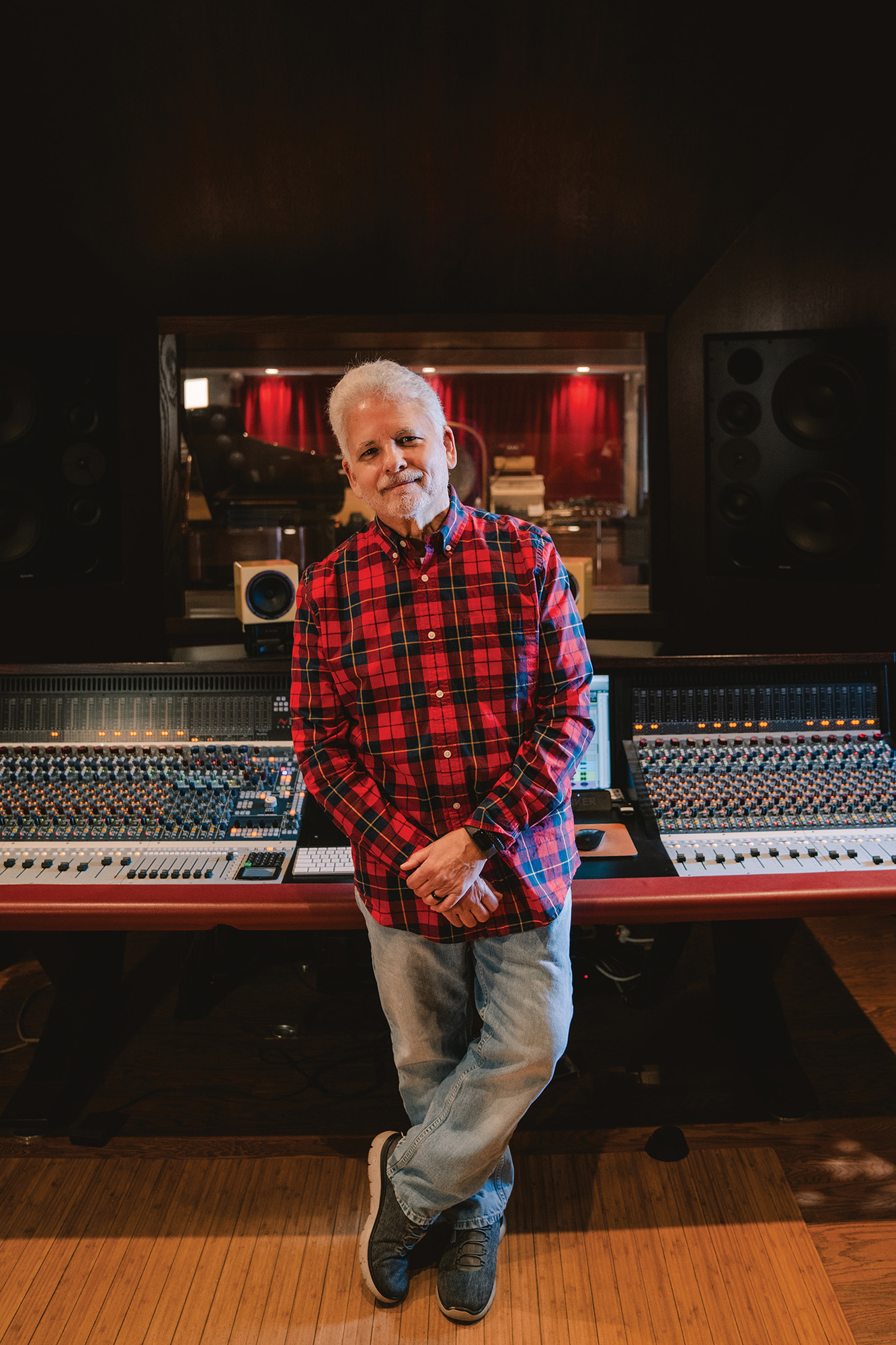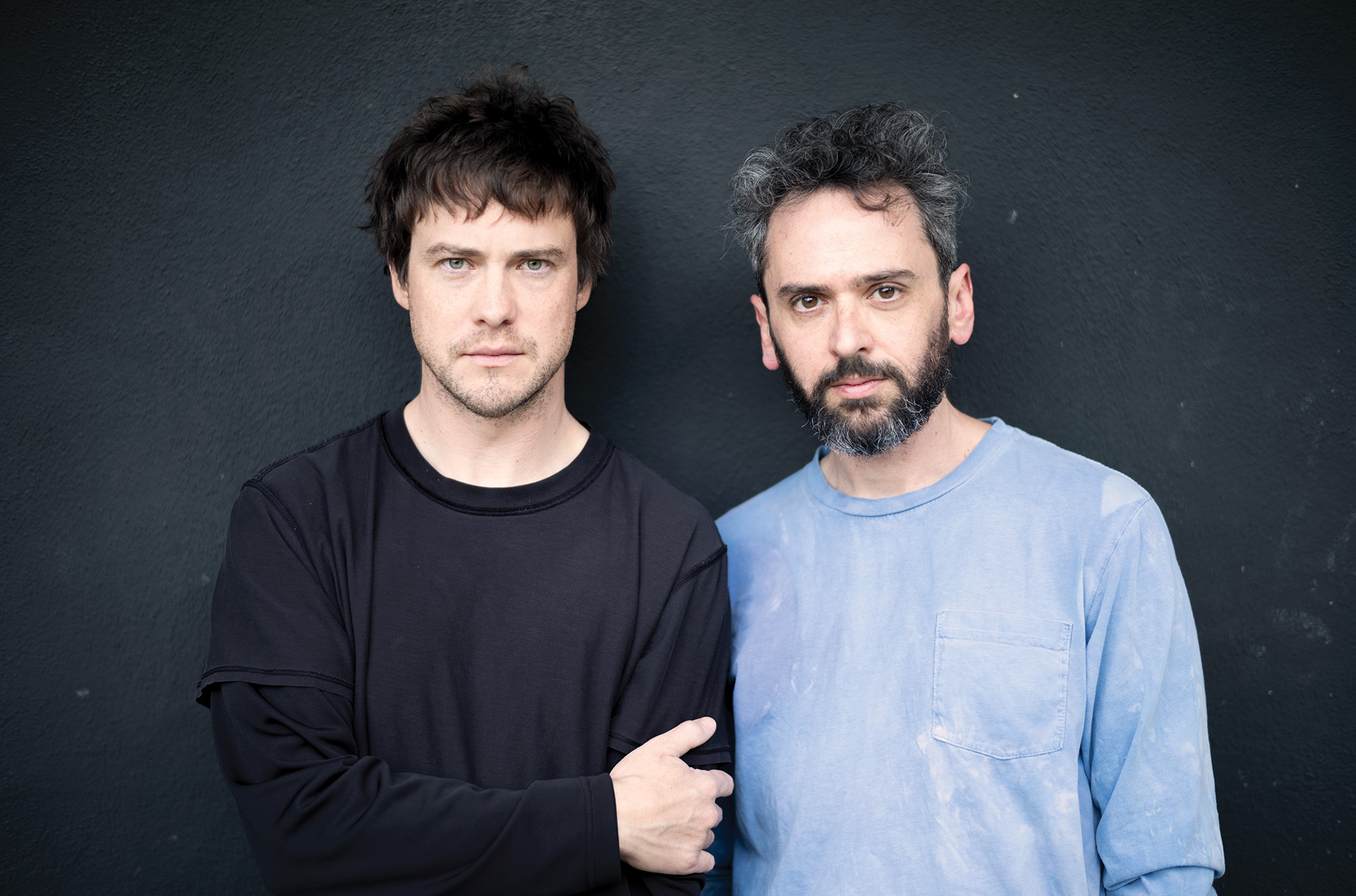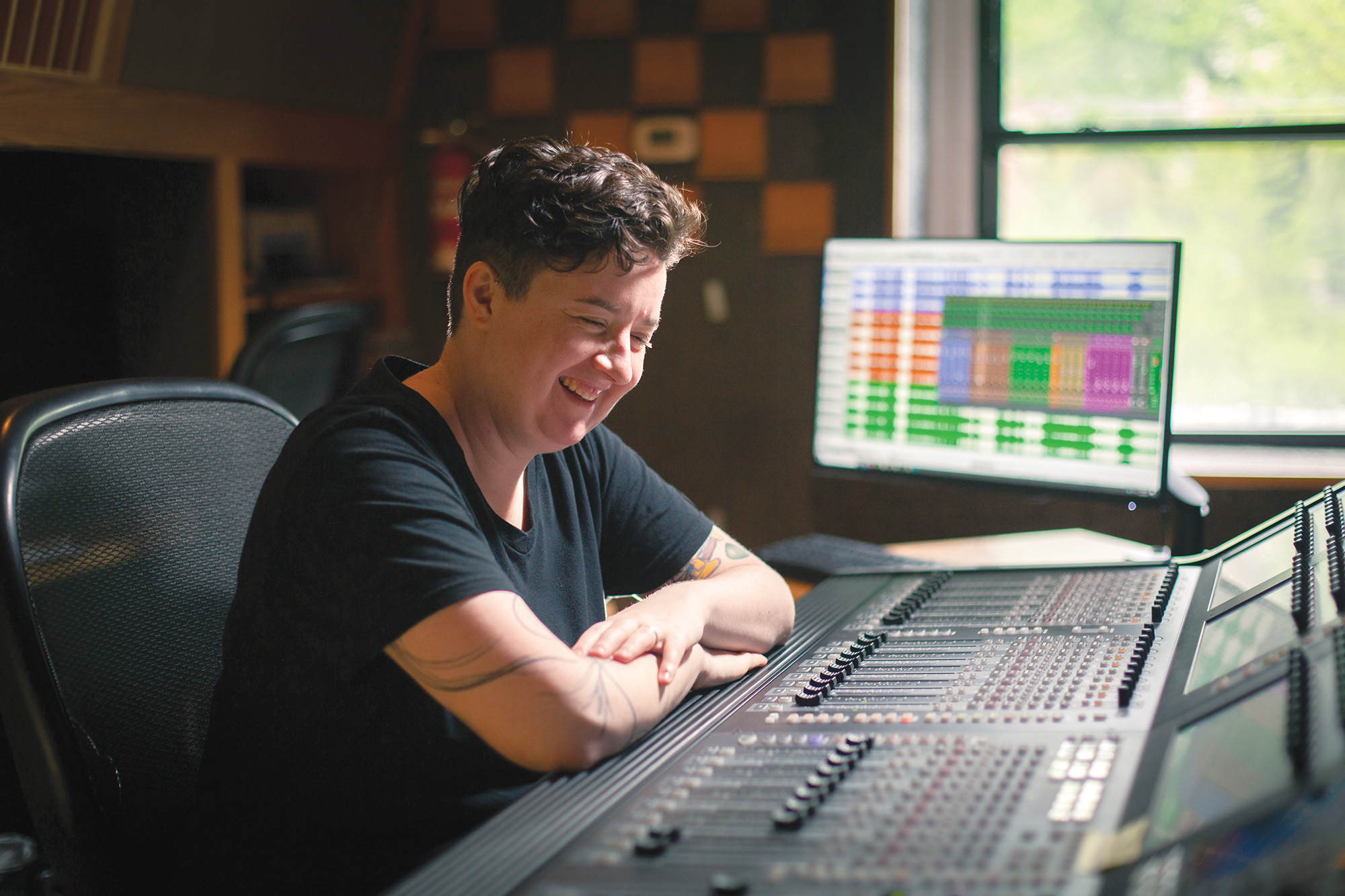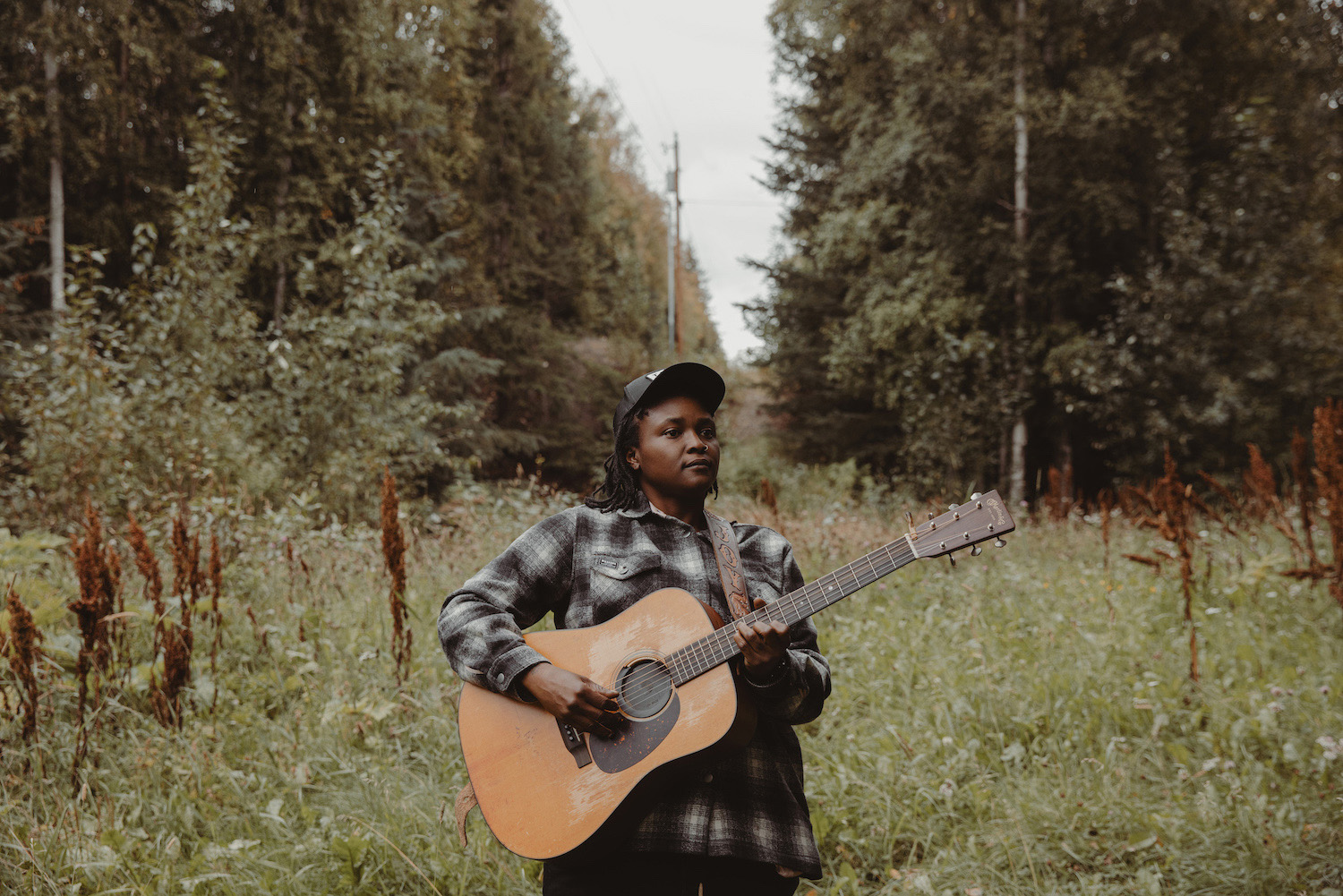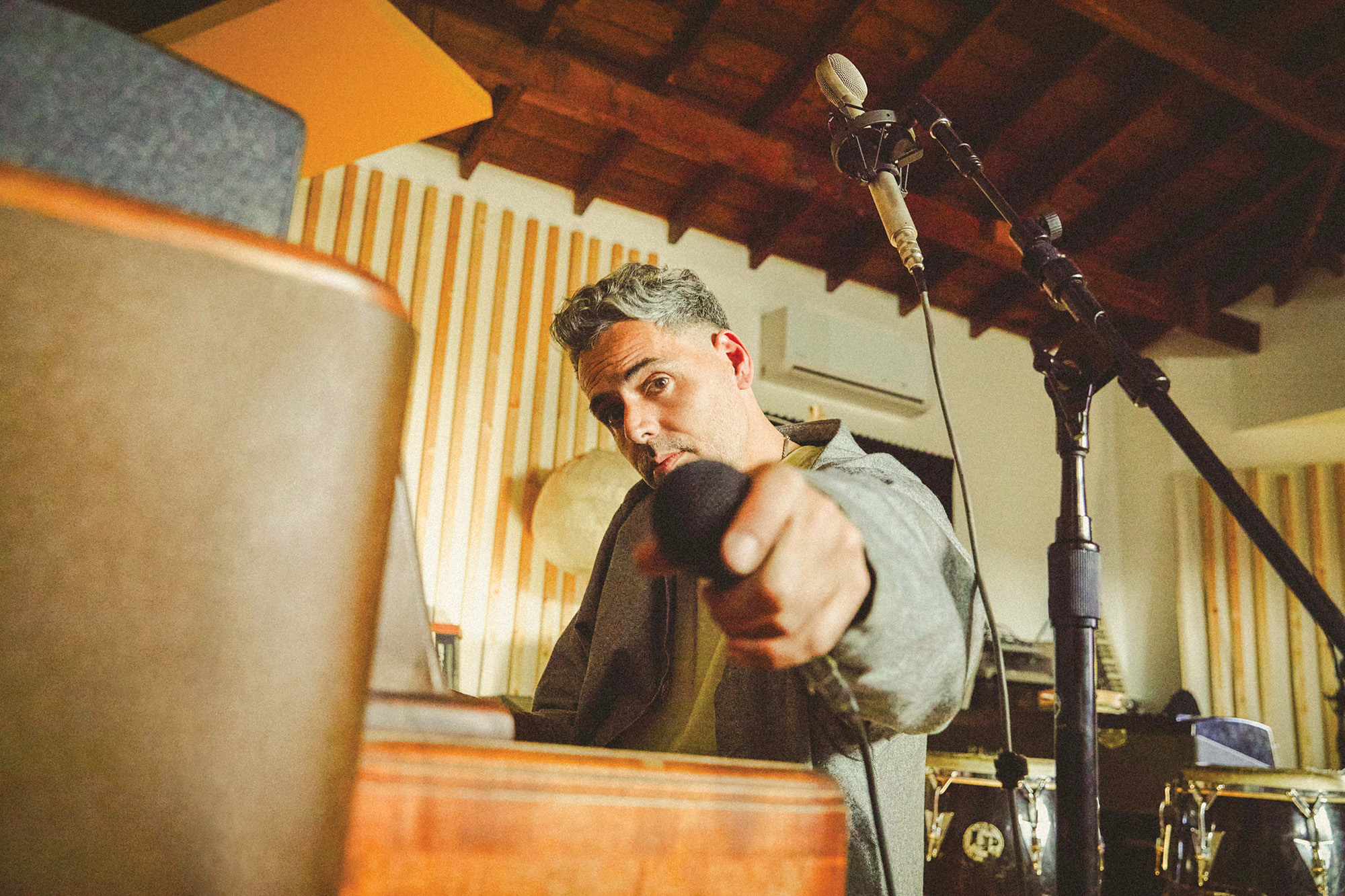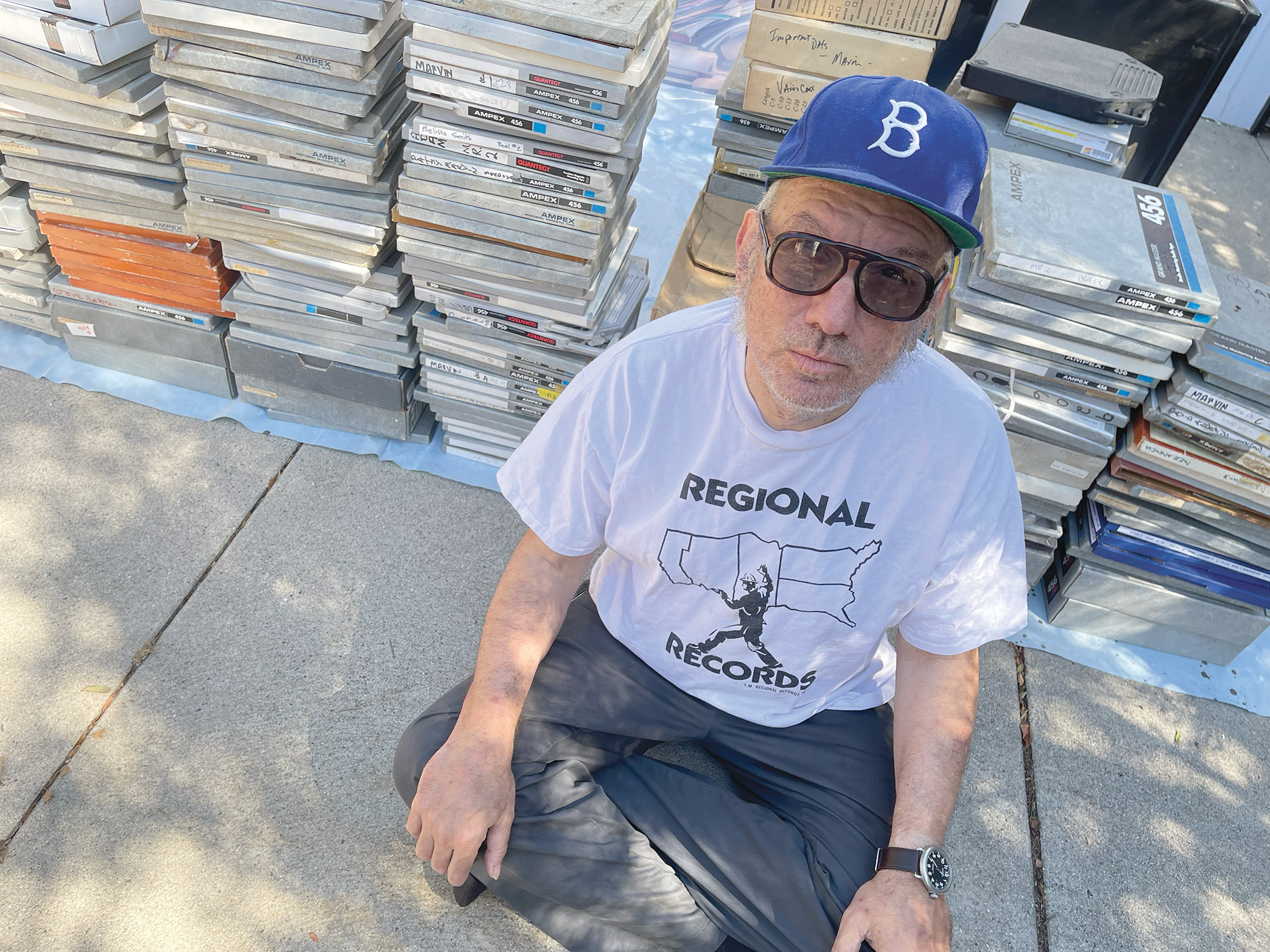You mentioned that your dad was into music.
Yeah, my father was a bass player. When I was about 14 years old I met this kid in class who played guitar, so I borrowed a bass and there was a drummer that lived around the corner. We started a band. My dad bought me a '62 [Fender] P Bass, a P.A. system and a bass amp. I started playing with some really good people. I actually have some of these recordings of my band, Praying Mantis, from 1967.
Wow!
I was in a band called Electric Circus and the singer was Lana Hale, the daughter of "Skipper" [Alan Hale, Jr.] from Gilligan's Island. She was a great vocalist, so we got a lot of gigs. I played until I was 24 years old, and then at 25 I went to an engineering school called the University of Sound Arts. I used to go to the studio with my father and I'd focus on the engineer. I'd watch him set up mics and get levels — everybody deferred to the engineer and not the producer. It was like the engineer was the guy. That's what I wanted to be. I'd heard it was really hard to get a job when you got out of school. I got a phone call from a bandmate that I had played with named Doug Parry. Doug knew I'd finished the engineering school, so he and I partnered up. We started Smoketree [Ranch Studios] in a barn that he was rebuilding on a ranch out in Chatsworth [California, a suburb of Los Angeles]. That's where Steely Dan did one of their records. Later he owned two studios, Andora and Smoketree, and he now owns Rack Attack [Rentals]. I was with Doug for about seven months; then I went to another studio that offered me a job — Redondo Pacific. Then I ended up at Eldorado [Recording Studios] — I learned a lot. There had been engineers there, but they'd all left and I was the only guy. I was working around the clock. I'd do everything from country music to disco to rock — just continuously recording and learning. I worked with a lot of great people. I had been there for about a year when the studio manager said, "Brian Eno [Tape Op #85] wants to come in." We had put in Mix Magazine that we had this new Lexicon 224 Digital Reverb... but we didn't! I knew this guy who was an equipment broker; I called him and asked if he had one, because Brian was coming in to look at it. He said there was one going to the Village Recorders, and he'd let me borrow it. I learned how to use it that morning! Then Brian came in and he had a cassette tape. I put it through the board with the reverb, delays and other effects I had. He goes, "Wow! Do you like this stuff?" I said, "I love it!" He says, "I'm doing an album with David Byrne and I want to book time with your studio manager." That became My Life in the Bush of Ghosts.
Are you aware of this website for My Life in the Bush of Ghosts? The website has the multitracks to two songs that you can download and remix.
I gotta check that out! It was pre-MIDI when I recorded that. All the loops are real loops and they could be 16 to 20 feet long. I'd put masking tape as a guide on microphone stands and then run it through the heads. I'd have 24 tracks on the multitrack, then I'd mix that down to two tracks, make a loop out of that, put it on two tracks of a new 24-track and then we'd add from there. We'd build it up that way — all of it was experimental as we went along. Brian used to like to use what he called "found objects." It was really interesting. We'd do things like take a can (that you'd put film) in and a big glass, I'd put a mic at one end and we'd hit the reel can and the glass on the other [end]. I would speed the tape machine up and, when it's played back, it gets this low, low overtone. We were doing tons of stuff like that. Speeding the tape machine up, slowing the tape machine down, recording and seeing what we'd come up with. There was tons of editing that I would do. I was amazing with the razor blade. The very first job I did was editing. I had [Valley People] Kepex gates. You could put a sound in the key input, like a kick drum track, and then run a tone from an oscillator through the gate and the kick drum turns into a pulsing tone. I'd have nails in the wall; I'd hang the loops there and I'd write notes [about] what the loops were. I had little pieces of tape I'd save. I didn't have a second engineer on My Life in the Bush of Ghosts. Right after I did that record I got a call from Brian Eno asking me if I wanted to work with the Talking Heads. I went down to the Bahamas, and later to New York, and we did Remain in Light.
Were you at Compass Point Studios?
Yeah. I've done three records at Compass Point. Remain in Light was actually an extension of My Life in the Bush of Ghosts. For instance, we went to see Robert Fripp; Adrian Belew opened up for him. He was/is an amazing guitar player, and Brian asked him to come in the next day. I just ran the tracks. He started playing on them and when he got done he said, "Let's go." Brian said, "That was all great! It's a take."
For Remain in Light David Byrne stated [see Tape Op # 79] that you took half of the record to L.A. to mix.
Right. That's where I mixed "Once in a Lifetime" with David Byrne.
David said he left it up to the mastering engineer, Greg Calbi [see his interview, this issue] at Sterling Sound, to decide which mix to use.
The one I hear on the album sounds like the one I mixed.
What kind of effects units were you using then?
I had a [Eventide] Harmonizer [H910] and a [Lexicon] Prime Time delay unit. The sound on "Once in a Lifetime," where it sounds like he's underwater, that's the Prime Time. As David was singing, Brian started messing with the knobs and it got that underwater sound by happenstance. Brian Eno loved mistakes, and he called those "epi events" — episodic events. He said the mistakes that you don't plan on are really important. Frank Zappa called them "tweezlies." Frank Zappa also said that the mistakes come from "someplace else."
How did your work with Bill Laswell begin?
After I did My Life in the Bush of Ghosts, I was at Eldorado and I was working one night. This young guy came in named Tony Meilandt. Tony worked for Herbie Hancock and he asked me if I'd ever heard of Bill Laswell and Michael Beinhorn [Tape Op #84] — they had [the group] Material in New York. He had this idea that he wanted to put us together. Then later, Herbie Hancock's people call up. The idea was that Herbie was going to do an album; it ended up being called Lite Me Up. Tony brought [me] in, not to work on it but to sit in the lobby. He paid me by the hour just to hang out and get to know Herbie. When the people from the record company came down and listened to it they said, "If this doesn't go platinum we're going to put up a 'For Sale' sign in front of Columbia Records." The record did nothing — zero. So anyway, I get a call from Tony Meilandt and we recorded Future Shock with Bill Laswell. I did the recording at Herbie's — he had a guest house/garage thing set up, and I rented a board. I was working on another album at Eldorado; I'd go over to Herbie's and work at night. I brought an AMS Sampler that'd just come out. Bill said, "It'd be great, at this point, if we had Jimmy Page hitting this chord." I said, "We can do that!" So we sampled it. We were the first ones using sampling. Working with Michael Beinhorn and Bill Laswell was fun. Those guys were getting along really well. It was a "try anything" atmosphere; they didn't sit there and pick it apart. They let the flow go. What was good was good. If not, they laughed and tried it again. They gave Herbie a lot of room to do stuff, but they were able to edit. They were great producers! Michael Beinhorn and Bill Laswell do great productions on their own, and together they were magic. So, we finished the record. On Lite Me Up Herbie sang on it, while on Future Shock he didn't sing. The same people came down from the record company and listened to it. One of the guys asked, "Where's the singing?" Someone said, "Oh, we got tapes here. We can put singing on it." And Bill Laswell said, "Fuck you. I've got a plane to catch." And it ends up being a huge hit.
"Rockit!"
"Rockit." I went to New York right after that record came out and I saw kids breakdancing for money on the street to "Rockit."
That must have had a huge impact on you.
I lived in an apartment at the time and I heard it playing out of people's [windows]. It was this gigantic hit! The record label just hated it when they first heard it. I loved working with Bill Laswell.
Why? What was it about working with him?
Bill Laswell is a great guy. He's an amazing bass player. He's got really eclectic tastes. And he brings in people and instruments that normally wouldn't be playing [together] on records. Working with Bill was a lot like working with Brian Eno. They come from the same school. There are certain producers I've worked with as an engineer — they just had it. And there were many that I won't name that didn't know what the fuck they were doing. That's how I became a record producer. A lot of these musicians I'd worked with were leading
bands later on, and they were calling me up to work with them as a producer. I never set out to be a record producer. I just wanted to be an engineer, but after I worked with the Rolling Stones my manager said, "People want you to produce their records." I'd produced some records that I was engineering by default; when I'd work with bad producers, I'd just instinctively take over to get the session and the parts done. I was doing what the producers would do.
So you're either soaking up what it is that they're doing, or being proactive when they're not doing something.
Exactly! Keep the momentum going because musicians are just standing there waiting for instructions and the producer doesn't have an idea. I've always got ideas for parts. I've got ideas for sounds. I've always got ideas to try something different. I don't know where that comes from. And when it's happening, and the musicians know what they're doing, I don't try to change it. I'm not one of these guys that picks through every part, if the musician knows what he's doing. Like with Jerry Cantrell from Alice in Chains — that guy's an amazing guitar player. I wouldn't step on his toes and tell him, "Stop. Play it this way." But I've worked with guitar players that didn't know where to go and I've helped them along when the producer would just sit there. I've gotten some great guitar solos out of guys (who I don't want to name). They'd play their solo and basically it'd just be a Jimmy Page riff or a scale. I'd tell them it could be much more than that. I'd plug in stuff, get a sound and I'd record with effects to give them a whole new vista to work within. They'd end up playing off my suggestions. Sometimes I'd have arguments with them. They'd say, "I don't know if this is going to work." I'd say, "Let's just get it done." And then they'd come back the next day, listen to the take and say, "Yeah. I love it."
Tell me about working as an engineer with the Rolling Stones on their album Dirty Work.
Making that record was excruciatingly hard. Keith [Richards] and Mick [Jagger] were fighting. It wasn't what I expected from the Stones.
How they worked or the music?
How they worked. And how they worked reflected on the music. Like, "One Hit (to the Body)" came together pretty quickly. There were some songs that came together pretty quickly. "Harlem Shuffle," was their second take. They just banged that out, but there were a lot of songs where it was like pulling teeth. It was so hard because they just didn't have that collaboration. They were working separately.
As an engineer, was there anything in particular that you took away from those sessions?
The main thing I took away from it was recording guitars. We were using Mesa Boogie amps, which get all kinds of sounds. Keith gave me total freedom to get guitar sounds and he liked the guitar sounds I got. The sessions were long, so instead of sitting there I was always fiddling about. Steve Lillywhite [Dirty Work's producer] was supportive. On the records I had done before that, the guitar sounds were really experimental. I didn't like what was happening in rock 'n' roll during the '80s. Glam happened in the early '70s; then a lot of these bands brought it back with the makeup, the hair and all that stuff — I hated those bands. There was no substance to them. I had fun working with more experimental type stuff. Working with the Stones, I was really thrown into the rock arena and getting rock guitar sounds. I learned so much in that year recording guitars. In fact, when I started producing, I started producing rock bands and getting guitar sounds. I learned a lot from Keith. Keith is an amazing person — he's very intelligent. It was just talking to Keith and getting his vibe, and Ronnie Wood too. Woody's a great guitar player and a great person. I worked with Woody, Keith and Charlie the most. Mick and Bill Wyman would just come in, do their bits and leave; but Keith, Charlie and Woody were always there. There was also a guitar tech named Alan Rogan who was the guitar guy for The Who for 22 years. I learned a lot about guitars from him.
Was it mic placement, how amps were modified or how guitars were customized?
Well, Alan Rogan owned a high-end guitar and amp rental business in London. I learned a lot just being immersed with the guitar guys that were the real deals. That's what sent me into guitar world — for the rest of my career I worked on bands that had guitars. Opportunities randomly come along all the time, but you have to be in tune to recognize them; the only way you can do that is by having an open mind. I always like to try something different — opportunities will come along and I'll grab them. Just like when Brian Eno called and said he wanted to come by the studio. I knew that was an opportunity — a big opportunity. At that time I could have been recording the standard rock groups while trying to build a career instead of working on more experimental type stuff. That went into working with the Talking Heads. I loved the Talking Heads before that. The opportunities just fell together. You know, there are opportunities that I missed because I was working on other things.
But that's kind of a high-class problem to have.
Well, what happened to me in the '90s was that I was booked two years in advance. I'd miss opportunities to work on other bands where the records became big hits. I don't have any regrets about it. I loved working with all the bands I worked with, or I wouldn't have worked with them.
Do you have a general process for mixing?
Invariably what I say is, "Let me mix, then come in and listen to it." I don't like guys sitting next to me during the process. There's a point where I'll allow that when we're fine-tuning. I hear it like I hear it, and my placement of the instruments and how I do things is totally different from what they've been doing in their rough mixes. To me that's what it should sound like. It could be done a million different ways, but to Dave Jerden's brain that's what you're going to get. Mixing is my favorite thing to do.
I read that when you're mixing, you like to hear things at about 84 dB.
Well, on the Fletcher-Munson curve that's where you get the proper balance [of our hearing] between the high and low end. I will listen at that level, but when I'm fine-tuning I'll go really low. I'll sit off axis from the speakers to make sure that things are coming out that I want to come out and that the dynamics are happening, things like that. I also like blasting it loud to see what it sounds like — that's just for fun because most people aren't going to listen like that. Listening low and listening at the boring level, 84 dB — I know when I turn it up if it's going to sound great.
What about during the recording process?
I like to listen louder when I'm recording. It's probably more like 100 dB.
Do you use a sound level meter?
I have one, but I'm so used to knowing what 84 dB sounds like. I like working with concentric speakers. The woofer and the tweeter are in the same speaker — the tweeter is in the middle. I have done a lot of work on [Yamaha] NS-10s, which are two separate speakers. However when I turn my head I get a "splatter," as I call it. The sound changes. With concentric speakers everything always sounds the same. Tannoy makes them, but we modify them with Mastering Lab ML10 crossovers.
Over the years you've worked with Bryan Carlstrom and Annette Cisneros as your own production team.
After I came back from doing the Stones, I was engineering, producing and mixing — doing everything. I knew it was becoming too much. There's a different mindset between engineering and producing. When you engineer you tend to put things in boxes, clean things up and make everything nice and neat; but in producing it doesn't matter. For instance, [for] an engineer the snare sound is a big deal. When you're producing, for me, it's not about that. The snare sound is important, but it's just one cog in huge wheels within wheels. The mindset is, "Is the song really any good? Is this entertainment?" What we're doing is entertainment. It's a business and we're trying to make a product. "Would I like this?" I consider myself the first person in the audience, and if I like it there are going to be people that will like it. The artist is asking you questions and, if you're engineering, you're concentrating on the technical end. So, I met Bryan Carlstrom at Track Record Studios. He was the second engineer. My wife was managing Capitol Records Studios and Bryan was working there as kind of a gopher. I needed an engineer. Instead of going out and finding some hot engineer at the time, I wanted Bryan and I brought him in. I showed him my way of recording.
I can tell that you've had a profound influence on the way he works.
But he took it to another level. Bryan Carlstrom is the best engineer I've worked with. He's just got it. He understands. He's got the right vibe. When Bryan and I work with each other I would say 50 to 75 percent of the time we don't even have to talk to each other about what needs to be done. If it's not working we give each other a look. If it's working we give each other a look. We play off each other. After 20 years he's like my Siamese twin. There was a period where Bryan and I didn't work together and Annette engineered for me. Annette is an amazing engineer as well. Myself, Bryan and Annette — we all know engineering; we've all done a lot of records together — lots of records together — and it's a team. I don't think it will ever be broken up. I'm like the conductor. If somebody plays the wrong note I stop it and say, "No. That's the wrong note. Let's try it again." But, you know, the flow is everything. This has happened to me several times: the artist, after I started a record, has actually taken me aside and said, "There's something wrong. This is going too smoothly." And I'll tell them, "You're working with people that know what they're doing." We've made lots of different types of records and we take pride in everything we do.
People have been so used to things not going correctly that they think that's the way things are supposed to be.
Because people don't know their goddamn jobs. I've worked with all different kinds of personalities and I know where to start with a band, how much preproduction is involved, what to do in preproduction, what to do when we get started and what to tell the band. I keep the band informed of what's going on at all times — what we're doing, why we're doing it — because we've done so many records. We could just close the band off [and] tell them to do their parts. But I try to involve everybody in the band because I've been in bands myself. I've done recordings myself when I was playing in bands. I pay attention to everybody in the band. I want the opinions of everybody in the band. When we're doing basic tracks and it's about the drummer, I listen and concentrate on the drummer. I don't let the rest of the band tell the drummer what to do. When it comes time for the bass parts, the bass player gets to play his bass parts without anybody in the band interfering — same for the guitar players or vocals. When I was engineering, I'd see other producers that would sit there while the rest of the band would tell the singer what to sing and how to sing it. The singer [usually] just throws up their hands and they don't get a good performance. Working with vocalists is a very special thing. That's what people are going to hear first. We do a warm-up for levels and I record that. Then we'll do five tracks and just sing it. Then I do a comp. They come back in the next day and do it again. I comp with the previous comp until I get exactly what we need. Or maybe they sing it all the way through, it's great and I know it. I give them the freedom to sing. If they can sing, let them sing! I've also worked with vocalists that couldn't sing. You know, they really couldn't sing. I would work with them and bring it out of them. I've recorded Mick Jagger, who's really hard to record.
Is he self-conscious?
No. He's hard to record because of the way he works the mic. He told me this: back in the old days, when the P.A. systems weren't any good, he'd move up on the mic when he sang something loud. So, he'd work the mic backwards. When you wanted something soft, he'd back off the mic. That was from his old live concerts and that's the way he works. He comes up to the mic and he's got a really strong voice — the meters just go off the wall. I'd use two Studer compressors to double compress him. I'd place a PZM mic on a music stand and I'd also use a regular mic because he's used to moving around — I'd get everything. I used the PZMs when I did Mick's record, She's The Boss, but [Mick] just sang on a regular mic when we did the Rolling Stones' record. Even now I use a lot of multi-mic'ing techniques for doing vocals.
Would you use a different mic when recording vocals with Keith Richards?
We'd set up a room with a chair in it when I recorded Keith. He didn't want to be seen when he did vocals. I don't remember what mic I used on him. I've done vocalists where they were so used to using the [Shure SM]57 or 58 live that I'd let them use one, and hand hold it, because they couldn't stand at a mic at all. Whatever it takes. With multi-mic'ing techniques you can have phase problems, so we get the phase right. Phase is number one — making sure everything is in phase, starting with the drum kit. My recommendation to new bands is to use the least amount of mics possible until you learn multi-mic'ing techniques. I have mixed so many records that were out of phase. I use two mics on the toms, top and bottom, and I flip the phase.
Do you use different mics?
Yes. I use a [Sennheiser] 421 on the top and an SM57 on the bottom. Sennheiser 421s, to me, have the best tom sound for doing rock. I top and bottom mic the snare with a 57. I bring a 57 in on the snare so that it comes in over the rim, but the back of it remains under the hi- hat because that's the off-axis. There are sound ports on the side of the 57, so you block out sound — it's cardioid. Knowing it's a cardioid mic, and that the back end is going to get the least sound because of the way it's designed, I bring it in so it's not picking up the hi- hat. When I get a mic I actually look at the chart and find out what the capabilities of it are — the frequency ranges and all that. I do my homework. I don't do things like, "Let's try this and let's try that." I know what mics to use on what, and for what sound I want to get.
I noticed that Talking Heads drummer Chris Frantz would use concert toms, without bottom heads.
I put the mic way up inside. It cuts out the cymbals. With a drummer that uses a lot of cymbals, they can wash over the whole sound. For years I would use a P.A. system; I'd pump the toms, the kick and snare through that while using stereo room mic'ing. I would go around the room and listen. A lot of times I'd put the mic up against glass, because you get an overtone from that. I would use asymmetrical stereo mic'ing, but in the control room, when I'm listening, it sounds balanced. A lot of times you can set up left and right on a drum sound; the drum's low end is all coming from the left. There are different sized rooms that I use for recording. If I'm doing something that's really fast, like The Offspring or Social Distortion, I like that in a smaller room. In a big room you don't get that tightness. But for anything that's mid-tempo I use a big room. When I recorded Alice in Chains' Dirt, I recorded it in a place called One On One where Metallica made "The Black Album." It's privately owned now. I used a P.A. system, but they also had a 31" Kevlar speaker! I pumped the kick drum through that; that's what gave it a huge sound. It sounded like cannons going off. The room can make a lot of difference. I don't use a P.A. when I'm using a small room.
That makes sense.
There's one point I want to put in, though, before we finish. I don't knock other bands, other producers or anybody in the music business. My father said to me, "Never knock another guy makin' a buck in the music business." God bless him. It's a tough industry; if you're making a buck, don't knock the next guy because he's doing the best he can. I don't go around putting people down because I know everybody's trying the best that they can. I may not like their music, but I'm not going to knock the person that's making it. Labels have said of a lot of records that I've done, "This doesn't sound like anything else out there." Alice in Chains' first album [Facelift]. Nothing's Shocking [by Jane's Addiction]. Same phone calls — they're worried that it doesn't sound like anything out there. The first Alice in Chains record just sat there for almost a year and nobody played it because they said Lane [Staley's] voice was "wrong." This was at the time [with] Axl Rose all that other high-pitched stuff. Nick Terzo [A&M Records] is a great guy and he was totally into it, but nobody else got it. Nick Terzo shopped that demo to every producer in town — I wasn't the first choice or anything. Nobody wanted to do it, but I got it and I loved it.
davejerden@mac.com
